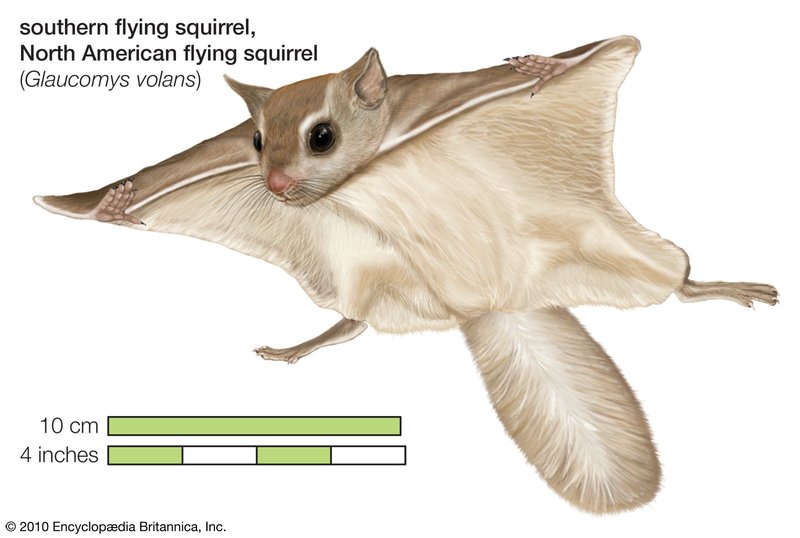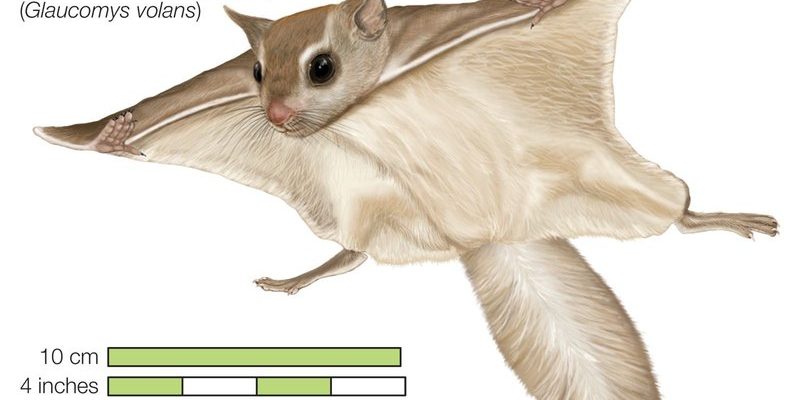
Flying squirrels are more than just cute faces; they contribute to seed dispersal, help maintain tree health, and even provide food for various predators. Ever noticed how a single tree can change the whole look of a forest? Flying squirrels help with that, ensuring that trees can flourish by spreading their seeds far and wide. In this article, we’ll explore how these tiny gliders fit into the larger web of life, and why their presence is vital for a healthy ecosystem.
What Are Flying Squirrels?
Flying squirrels belong to the family Sciuridae, which includes all squirrels. Unlike their tree-dwelling cousins, these squirrels have special adaptations that allow them to glide from tree to tree. They have a membrane called the patagium that stretches from their wrists to their ankles, which helps them sail through the air. Imagine being able to glide like a superhero! Typically, flying squirrels are nocturnal, meaning they’re most active at night, making their gliding antics a special treat for those lucky enough to spot them.
There are several species of flying squirrels, with the Southern Flying Squirrel and the Northern Flying Squirrel being the most recognized in North America. Both species share similar habitats, mainly dense forests where they can find plenty of trees to glide among. Their diet consists mainly of fruits, nuts, and fungi, which brings us to their critical role in the ecosystem.
Seed Dispersal: A Hidden Hero
Let’s dig into the idea of seed dispersal. Flying squirrels play a significant role in ensuring the growth of trees and plants by transporting seeds. When they munch on nuts and fruits, they often bury part of their stash as a way to save food for later. However, they don’t always remember where they’ve hidden every single seed! As a result, some of those seeds end up sprouting into new plants.
This behavior helps maintain the health of forests. Healthy forests not only provide homes for countless animals but also contribute to air and water quality. A well-functioning ecosystem thrives on diversity, and flying squirrels help promote that diversity by ensuring a variety of plant species can flourish. It’s like planting a garden but letting nature do the hard work for you.
Tree Health and Ecosystem Stability
Besides aiding in seed dispersal, flying squirrels also contribute to tree health. Their diet, which includes fungi, aids in the spread of mycorrhizal networks—tiny underground systems that connect the roots of trees. These networks are vital for nutrient exchange, enabling trees to access essential minerals and water. Here’s the thing: without these connections, trees struggle to thrive, which affects everything from air quality to wildlife habitats.
The relationship between flying squirrels and trees is a fantastic illustration of how interconnected our ecosystems are. When flying squirrels glide from tree to tree, they’re not just having fun; they’re engaging in a crucial role that promotes stability within their environment. Think of them as the caretakers, ensuring their home remains robust and thriving.
Providing Food for Predators
Let’s not forget that flying squirrels are also a snack for various predators. Animals like owls, hawks, and even snakes rely on these little guys for food. It’s a balancing act—flying squirrels help support the populations of predators just as those predators help control the flying squirrel population. This balance keeps the ecosystem healthy and vibrant.
Imagine a food web, with flying squirrels at one point, serving as a meal for predators and contributing to the nourishment of those species. This dynamic not only maintains order but also allows for a rich diversity of life forms in the area, showing that every creature, no matter how small, has an important part to play.
Threats to Flying Squirrels and Their Ecosystem
Unfortunately, flying squirrels face several threats in today’s world. Habitat loss due to urban development, logging, and climate change significantly impacts their populations and, consequently, the ecosystems they support. When forests are cut down, flying squirrels lose not only their homes but also their food sources. It’s a scary thought: fewer flying squirrels mean less seed dispersal, less tree health, and a potential spike in other animal populations.
Invasive species also pose a threat. As more non-native species move into their habitats, flying squirrels must compete for food and living space. This can lead to a decline in their populations, creating a ripple effect that impacts many other species. If flying squirrels were to disappear, the ecosystem would suffer in ways that are hard to imagine, showing just how connected we all are.
Conservation Efforts and A Brighter Future
There’s good news! Many organizations focus on conserving the habitats that flying squirrels call home. Through forest management and reforestation efforts, we can support the restoration of these essential ecosystems. Communities can also help by creating awareness of the importance of flying squirrels and encouraging sustainable practices.
You might be wondering how you can make a difference. Even small steps, like planting native trees in your backyard or supporting local conservation initiatives, can have a lasting impact on flying squirrels and their ecosystems. Every little bit counts, and you might find yourself contributing to the health of your local environment in unexpected ways!
The Bigger Picture: Nature’s Interconnectedness
Finally, the role of flying squirrels in their ecosystems serves as a beautiful reminder of the interconnectedness of all life. Every animal, no matter how small or seemingly insignificant, contributes to a larger system. Protecting flying squirrels means safeguarding a whole host of other species and the habitats they share.
Think of it like a team sport. Each player has their role, and if one player drops the ball, the whole team suffers. By recognizing the importance of flying squirrels, we can better appreciate the delicate balance of our ecosystems and our role in maintaining that balance.
In wrapping up, flying squirrels are more than just charming creatures; they are vital players in their ecosystems. Their role in seed dispersal, tree health, and food webs illustrates how every species, big or small, contributes to a thriving natural world. By understanding their importance and supporting conservation efforts, we can help ensure that these fascinating gliders continue to thrive in our forests for generations to come. So next time you hear about a flying squirrel, remember just how much they do behind the scenes!

